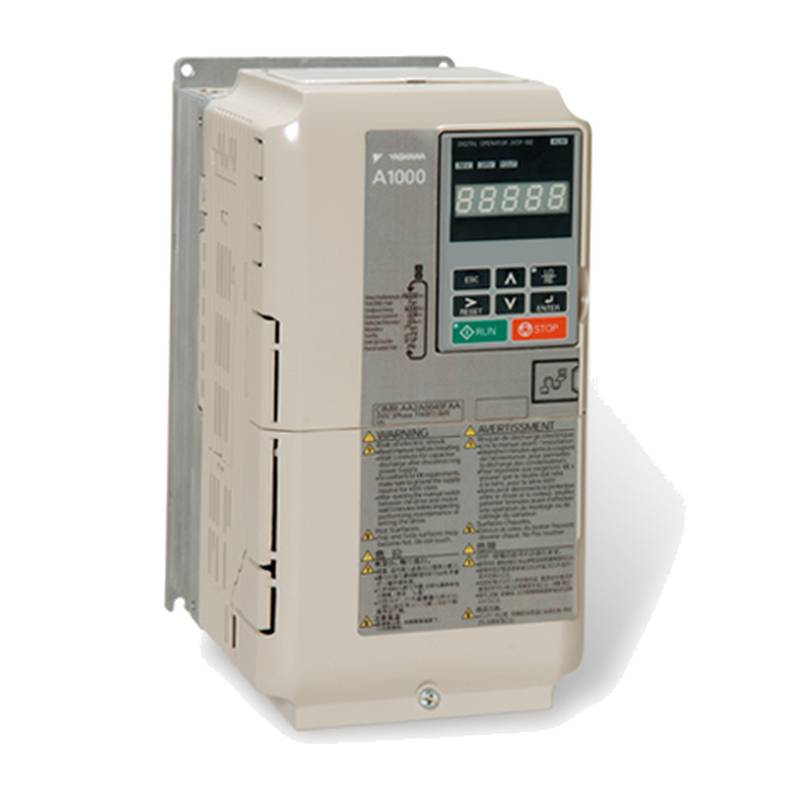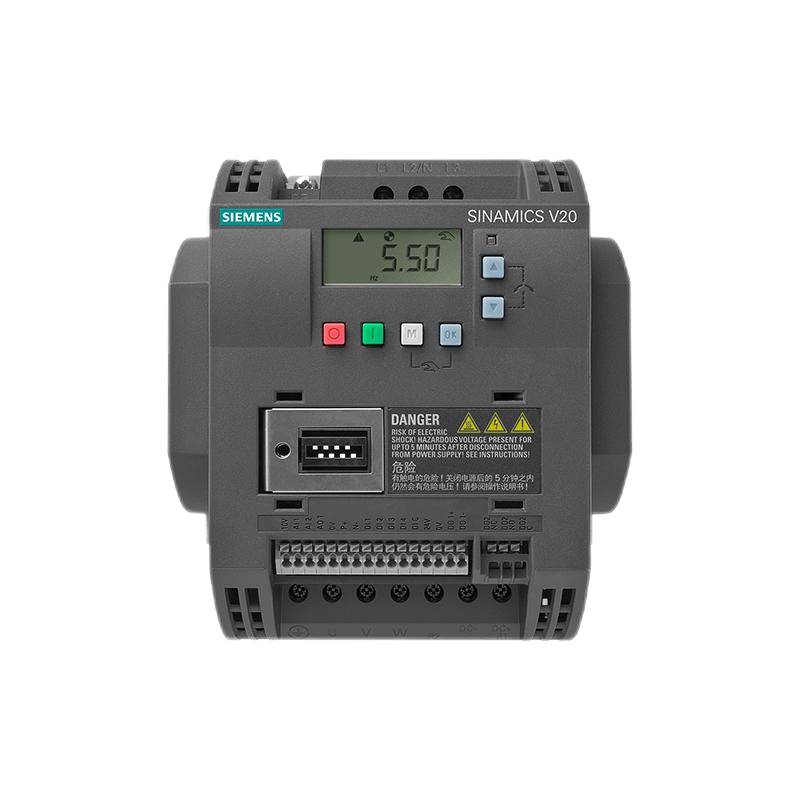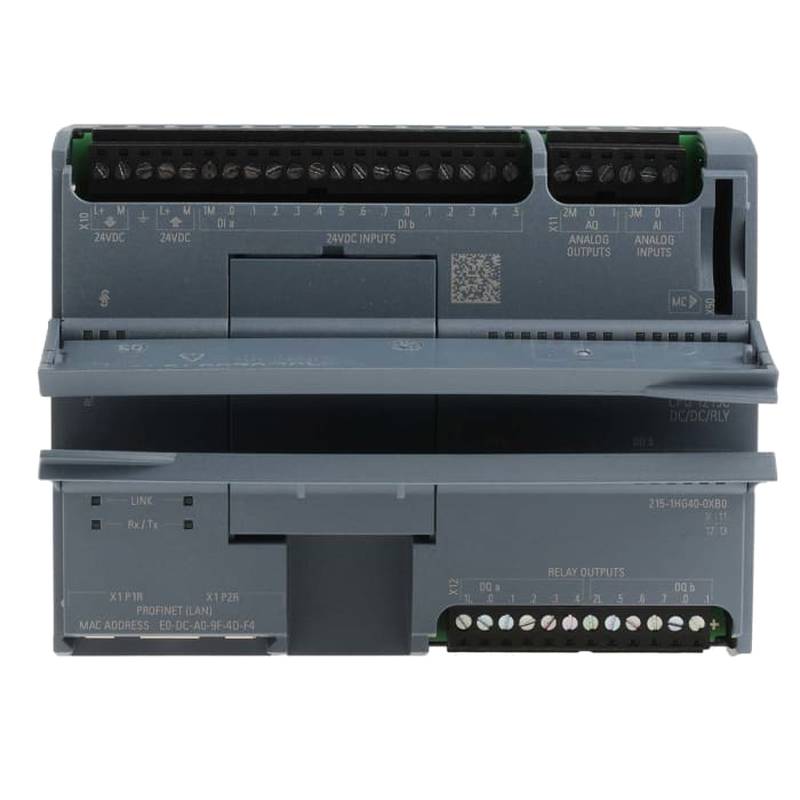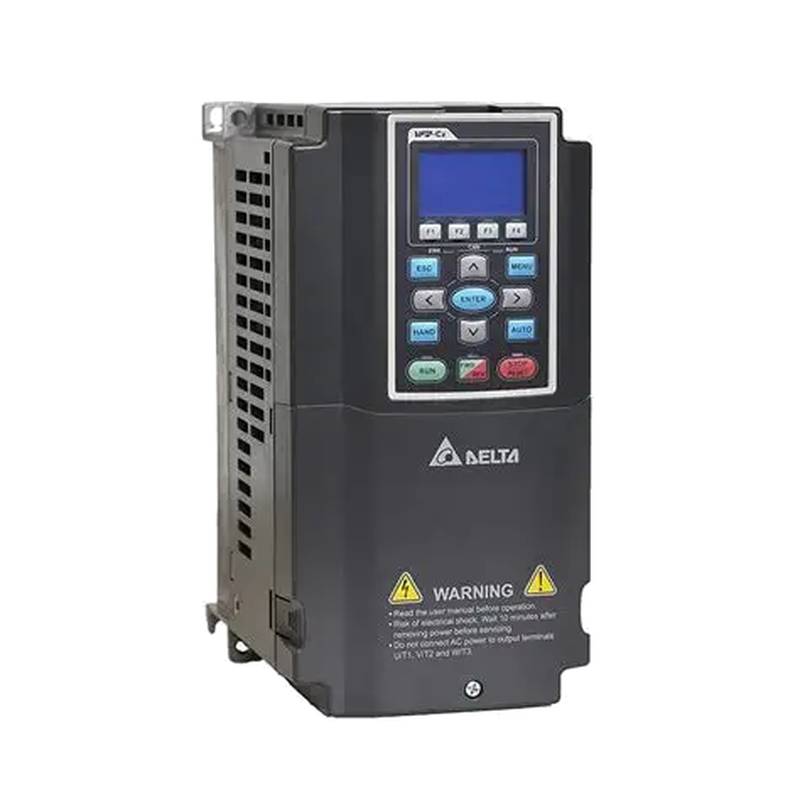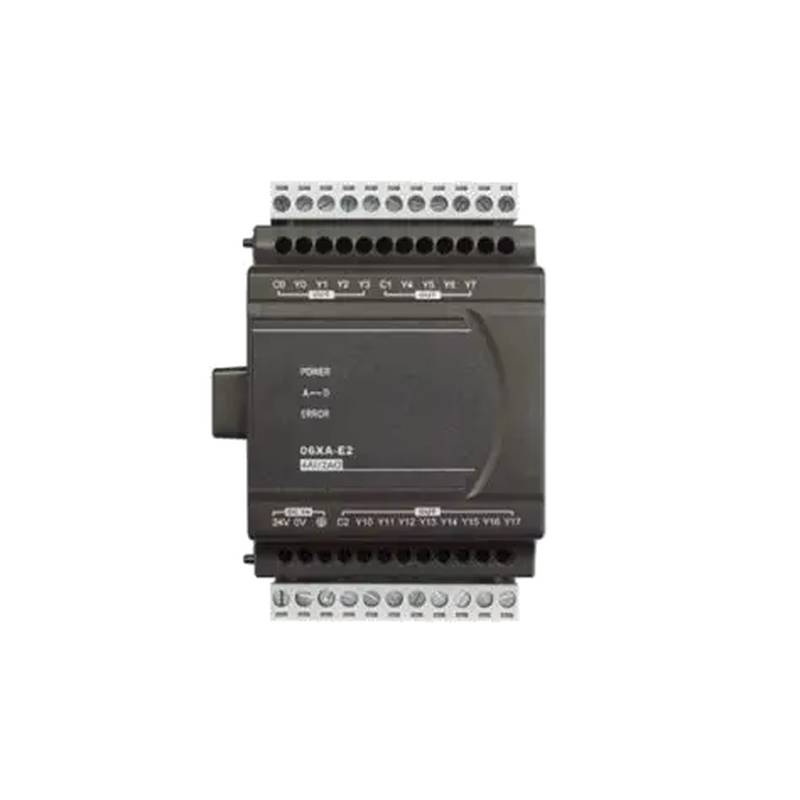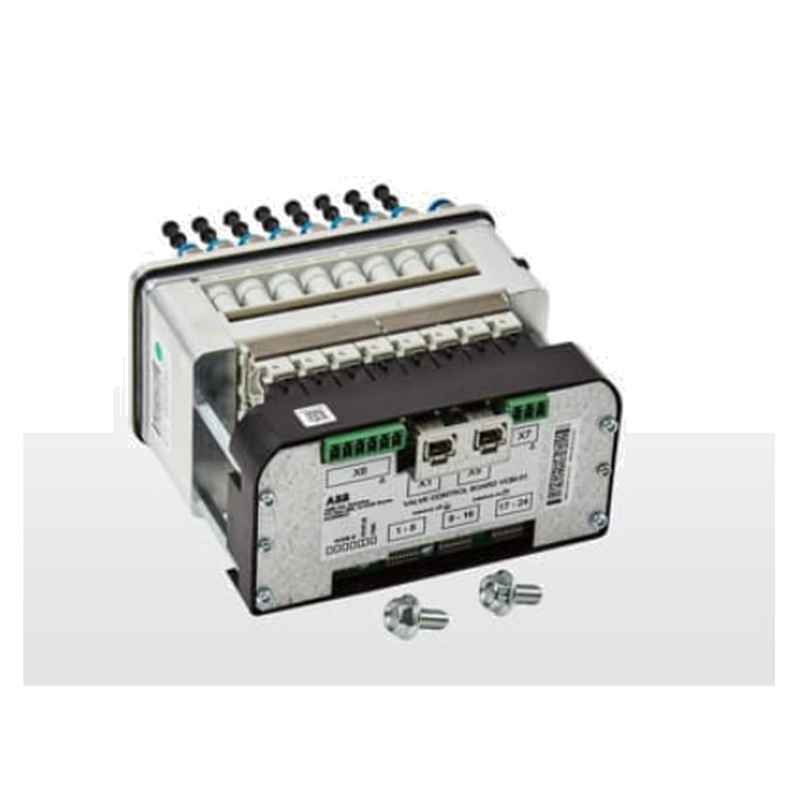
The YASKAWA A1000 Universal Compact Vector VFD, model AB4A0002FBA, is engineered for precise motor control and robust performance in demanding industrial environments. This 1.8A, 0.4kW variable frequency drive offers exceptional flexibility and efficiency, making it a premier choice for a wide array of automation applications. Its compact design simplifies integration into existing or new systems, while its advanced vector control technology ensures optimal torque and speed regulation even under fluctuating loads. Key advantages include enhanced energy savings, extended motor lifespan, and superior process control.
Product Specifications
| Feature | Specification |
| :----------------------- | :------------------------------------------ |
| Model | YASKAWA AB4A0002FBA A1000 |
| Rated Output Power | 0.4 kW (0.5 HP) |
| Rated Output Current | 1.8 A |
| Input Voltage | 3-Phase 200-240V AC |
| Output Voltage | 3-Phase 200-240V AC |
| Frequency Range | 0.01 to 400 Hz |
| Control Method | Open-Loop Vector Control, V/f Control |
| Ambient Temperature | -10 to 50 °C (with derating) |
| Protection Rating | IP20 |
| Dimensions (H x W x D) | 185 mm x 104 mm x 143 mm |
| Mounting Type | Wall/Panel Mount |
| Braking Transistor | Built-in |
Core Features & Market Positioning
The YASKAWA A1000 series stands out in the competitive VFD market due to its sophisticated Open-Loop Vector Control, delivering precise speed and torque performance akin to closed-loop systems, but without the need for encoder feedback. This technology significantly enhances responsiveness and accuracy, critical for applications requiring tight process tolerances. Its inherent flexibility, supported by a wide range of configurable parameters and communication options, positions the A1000 as a versatile solution adaptable to diverse machinery and automation platforms. Industry professionals value Yaskawa's reputation for reliability and longevity, which translates into reduced downtime and lower total cost of ownership for end-users. The drive's user-friendly interface and intuitive programming further streamline implementation, making advanced motor control accessible even for less experienced personnel.
Key Application Scenarios
The YASKAWA AB4A0002FBA A1000 excels in numerous industrial applications where precise motor control and energy efficiency are paramount. It is ideally suited for fan and pump applications, automatically adjusting motor speed to match system demand, thereby optimizing energy consumption and reducing operational costs. Conveyor systems benefit from its ability to maintain consistent speed and torque, ensuring smooth material flow and preventing product damage. In machine tool applications, the VFD's accurate speed regulation and quick response times are crucial for achieving high precision in cutting and machining operations. Furthermore, its robust design and compact footprint make it suitable for integration into packaging machinery, textile equipment, and various other manufacturing processes requiring reliable variable speed drive capabilities.
Practical System Integration Guidance
Integrating the YASKAWA A1000 VFD into an industrial system requires careful attention to wiring and parameter configuration. Ensure the input power supply is stable and within the specified voltage range (200-240V AC, 3-phase). For optimal performance and safety, proper grounding of both the VFD and the motor is essential. The drive's terminal block accommodates motor power, control signals, and optional I/O modules. When setting parameters, prioritize motor data entry (e.g., rated voltage, current, frequency, power) for accurate auto-tuning and vector control performance. For applications requiring precise speed regulation, configuring the Open-Loop Vector Control mode is recommended. Consult the Yaskawa A1000 manual for detailed wiring diagrams and parameter descriptions to match your specific application needs.
Operation and Risk Mitigation
Safe operation of the YASKAWA A1000 VFD hinges on adherence to installation guidelines and understanding its fault codes. Always ensure the drive is powered down and locked out before performing any wiring or maintenance. Avoid operating the VFD outside its specified environmental conditions (ambient temperature, humidity) to prevent premature failure. Common error codes, such as "Overcurrent" (d501) or "Overtemperature" (d502), typically indicate issues with motor load, wiring, or inadequate cooling. Rectifying these often involves inspecting the motor and cabling for shorts, ensuring proper motor-to-load coupling, and verifying sufficient ventilation around the VFD. Regular inspection of connections and a clean operating environment will significantly mitigate operational risks and ensure longevity.
Scalability & Long-Term Value
The YASKAWA A1000 series is designed with scalability and long-term value in mind. Its modular design allows for the addition of optional communication network cards (e.g., Modbus, Profibus, Ethernet/IP), enabling seamless integration into advanced industrial automation systems and IIoT platforms. This compatibility ensures that the VFD can evolve with changing plant infrastructure and digital transformation initiatives. Furthermore, Yaskawa's commitment to product development and backward compatibility provides a degree of future-proofing for invested systems. The inherent efficiency gains and extended motor lifespan facilitated by the A1000 contribute to substantial long-term operational cost savings, reinforcing its value proposition beyond the initial purchase price.
Frequently Asked Questions (FAQs)
Q1: What are the primary benefits of using the YASKAWA A1000 VFD?
The YASKAWA A1000 VFD offers precise motor speed and torque control. It enhances energy efficiency by adjusting motor output to actual demand.
This drive reduces mechanical stress on motors and machinery. It extends equipment lifespan and lowers maintenance needs.
Its compact design simplifies installation in various industrial settings. It also provides robust protection against common electrical faults.
Q2: Can the A1000 control different types of motors?
Yes, the A1000 is designed for a wide range of 3-phase AC induction motors. It supports both Open-Loop Vector Control and V/f control modes.
Open-loop vector control offers superior performance without motor encoders. This makes it ideal for applications needing precise speed regulation.
It automatically tunes to motor parameters during commissioning. This ensures optimal performance across various motor types and ratings.
Q3: What is the maximum motor size this VFD can support?
The AB4A0002FBA model is rated for 0.4kW (0.5 HP) motors. It's designed for compact applications requiring this specific output.
For larger motor applications, Yaskawa offers other A1000 models. These are available in higher power and current ratings to match various needs.
Always ensure the VFD's rated output current (1.8A) is sufficient for the motor's full load current. Check motor nameplate data for confirmation.
Q4: How do I set up basic parameters for the A1000?
First, ensure proper power wiring and grounding are complete. Then, access the parameter menu using the keypad.
Enter essential motor data like voltage, current, and frequency. This allows the VFD to auto-tune for optimal performance.
Consult the A1000 operations manual for detailed steps. Specific parameters may vary based on application requirements.
Q5: What communication protocols does the A1000 support?
The base A1000 unit typically supports Modbus RTU communications. This is a common industrial serial protocol.
Optional communication boards are available for other networks. These include Profibus, DeviceNet, and EtherNet/IP for broader system integration.
These options allow the VFD to be easily integrated into existing plant automation networks. It enables remote monitoring and control.
Q6: What does the 'Universal Compact Vector' designation mean?
'Universal' implies broad applicability across many industries and motor types. 'Compact' refers to its small physical size for easy mounting.
'Vector' indicates its advanced control method for precise torque and speed. This offers performance closer to closed-loop systems.
This combination ensures high performance and flexibility in a space-saving package. It’s ideal for modern automation demands.
Q7: What are common fault codes for the A1000 and how to resolve them?
Common faults include d501 (Overcurrent) and d502 (Overtemperature). These usually indicate motor or wiring issues.
Check motor wiring for shorts or ground faults. Verify motor load is within VFD limits and ensure adequate cooling.
Refer to the A1000 fault code list in the manual for specific troubleshooting steps. Corrective actions depend on the exact fault displayed.
Q8: Is the YASKAWA A1000 suitable for hazardous environments?
The standard A1000 VFD has an IP20 enclosure. This offers protection against solid objects larger than 12.5mm.
It is not designed for direct exposure to dust, water, or explosive atmospheres. For such environments, external enclosures or specialized VFDs are needed.
Ensure the operating environment meets the VFD's specified temperature and humidity ranges for optimal reliability.
Q9: How can the A1000 contribute to energy savings?
By precisely controlling motor speed, the A1000 avoids running motors at full speed unnecessarily. This significantly reduces energy consumption.
For applications like fans and pumps, demand-based speed adjustment yields substantial power savings.
The VFD's efficient power conversion also minimizes energy loss during operation compared to traditional methods.
Q10: What is the warranty period for the YASKAWA A1000 VFD?
Yaskawa typically offers a standard warranty for their industrial products. This usually covers a period of 18 to 24 months from the date of purchase.
Specific warranty terms and conditions can vary by region and distributor. It is advisable to check with your local Yaskawa representative or reseller for precise details.
Always register your product to ensure warranty claims can be processed efficiently. Keep your purchase receipt as proof of ownership.














